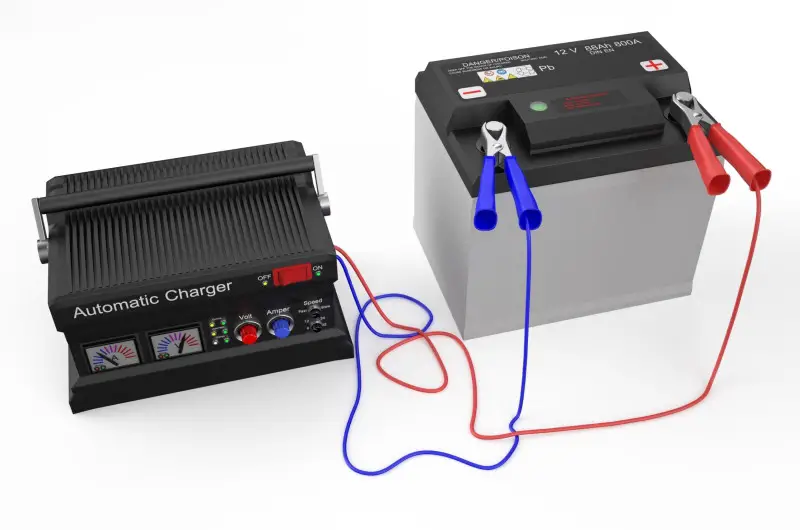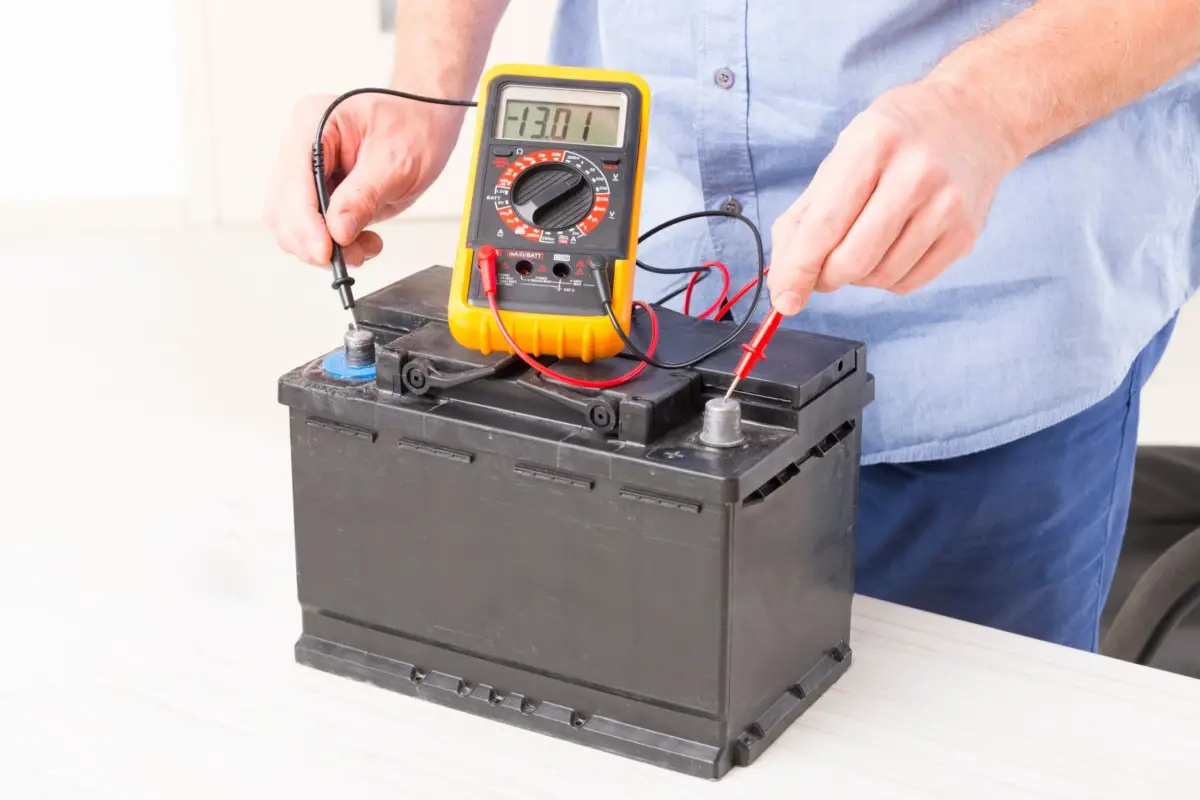Trolling motor batteries have definite lifespans, but you can maximize their longevity with proper use and proactive maintenance. However, all trolling motor batteries will have to be replaced eventually. So, how do you ascertain when to replace a trolling motor battery if you aren’t sure?
You should replace lead-acid wet-cell batteries after 2 to 4 years, whereas AGM (absorbed glass mat) has a lifespan of 3 to 6 years. Lithium batteries can last ~10 years. However, the standard or expected lifespans are subject to operating conditions and maintenance.
A deep-cycle, flooded lead-acid battery may die in 1 or 2 years if it is discharged past 50% and not recharged for months when you don’t use the trolling motor. AGMs require less maintenance but aren’t immune to this issue. This blog elaborates on when to replace trolling motor batteries.
How Do I Know for Sure if My Trolling Motor Battery Is Bad?
A failing or malfunctioning trolling motor is not necessarily due to a bad battery. The motor or wiring system could be the problem, too. However, typical performance issues and truncated operating times are generally due to a bad trolling motor battery. Still, the battery may not be entirely irredeemable.
A trolling motor battery is undoubtedly bad or beyond utility, if a voltage test reveals a reading lower than 80% of the full state of charge level. A 12V AGM trolling motor battery displaying a voltage of 10.5V or less is usually bad or dead and needs to be replaced immediately.
A fully charged 12V wet-cell lead-acid or AGM trolling motor battery should read 12.6V to 13V when tested with a voltmeter. A 12.5V reading down to 12V means a battery is at a 90% to 50% state of charge. Readings <12V at full state of charge indicate trolling motor battery degradation.
| Voltage | State Of Charge |
| 12.6 | 100% |
| 12.3 | 75% |
| 12.0 | 50% |
| 11.7 | 25% |
| 10.5 | 0% |
Note: disconnect load or charge to get an accurate reading
AGM batteries typically run 0.2 volts higher than wet-cell
Here’s a short video to help you test your trolling motor battery:
Telltale Signs for Trolling Motor Battery Replacement
The terminal voltage reading is a critical assessment, but it isn’t the only way to know if it’s time to replace a trolling motor battery. There are other telltale symptoms you can look for, a few of which are evident at one glimpse. Such symptoms are easy to detect & reasonably conclusive.
Visible Damage, Deformation, and Discoloration
Consider a new trolling motor battery if you spot any visible signs of physical damage. Broken terminals, cracked case or enclosure, bulging, any deformation, and discoloration are worrying signs. Also, a few signs may be less than obvious, such as tiny holes, cracks, or splits.
Overcharging, overheating, undercharging, and physical damage can cause deformation. An internal short may leave the terminals broken. Also, a broken or deformed battery case can be a sign of an internal short. Don’t use a trolling motor battery if it is physically damaged or broken.
You may notice discoloration on the case and inside the battery. Pinkish colors on the plates and negative strap are generally due to copper leaching from the posts into the battery. Any whitish discoloration is due to lead hydrate when you don’t recharge a fully discharged battery.
Signs of Leakage, Burnt Components, and Sulfation
AGM batteries are sealed, and thus the acid inside won’t leak unless the casing or enclosure is pierced or cracked. Flooded wet-cell batteries may have acid leakage. The leakage could be due to rough use, poor handling, deteriorating battery container, damage, and overheating.
Burnt components are usually due to an internal short. Trolling motor batteries tend to discharge completely in almost an instant during a short, and could even explode, but this is rare. This instantaneous discharge increases the internal temperature, which can burn or melt the components inside.
Replace the battery immediately if you sense a smell of burnt components. Do not attempt any methods to salvage or use a shorted battery. Also, do not conduct any inspection of a swollen battery when it is connected to the trolling motor or a charger. Avoid charging such batteries.
Sulfation is not a grave problem like an internal short, but it can affect the trolling motor battery’s capacity and performance. Sulfur ions crystalize if a battery is not recharged after a full discharge. This crystallization can worsen as you delay the recharge and could be irreversible.
You can reverse the sulfation before the ions form a crust on the plates. The simple solution is to recharge your trolling motor battery as soon as possible after a significant discharge. Also, you should keep deep-cycle batteries charged sufficiently during long periods of inactivity or in storage with a battery charger/maintainer.
If you need a battery check out our Review of Deep Cycle Batteries that we update every six months.

Can You Recharge a Dead Trolling Motor Battery?
As a safety feature, many contemporary chargers won’t recognize a 12V or 24V trolling motor battery as a rechargeable device if the voltage drops below 10V or 20V, respectively. Older bulk chargers could charge a dead battery, but without safety features, this could be dangerous.
Do not recharge a dead trolling motor battery if it has internal short, burnt components, visible cracks, bulging or swelling, deformation, and severe discoloration. Try to charge a fully discharged battery only if it has no signs of damage or a recent cause for concern.
You may encounter a problem when recharging a dead or fully discharged AGM battery. Such batteries usually don’t retain the voltage when you discharge them completely. Ideally, batteries should be used only to 80% of their full state of charge, or 20% depth of discharge. However, most deep-cycle batteries are rated to be used to 50% depth of discharge with significant cycle loss.
Precision chargers and other contemporary variants will probably not work in these circumstances because of built-in safeties. Hence, you can use an old bulk battery charger that will charge up to ~80%, at which point you can switch back to a modern smart charger. If the smart charger can fully charge your battery and your battery will hold the charge for more than an hour, your battery still has some life left.
If you need an onboard charger for your boat check out our articles for 24-volt or 36-volt trolling motors
How To Maximize Trolling Motor Battery Life
Here are a few tips to maximize trolling motor battery life:
- Always avoid full battery discharge.
- Try to limit every use down to 20% depth of discharge.
- Never discharge a battery past 50% state of charge.
- Always opt for a full recharge, not partial or half.
- Never store a fully discharged trolling motor battery.
- Try to connect a maintainer during battery storage.
- Do not use fast or superchargers too often.
- Use slow charging to optimize trolling motor battery life.
- Keep the battery clean to prevent discharge through grime.
- Avert storing trolling motor battery in cold and hot spaces.
Many people use precision chargers and trickle charging techniques to optimize trolling motor battery life. You may find these tactics effective, but the general preventive maintenance tips are mandatory if you want to extract all the available years in a lead-acid, AGM, or Lithium battery.
Last but not least, always use an appropriate trolling motor battery subject to the needs, required capacity, and operating conditions. A battery with an unsuitably low amperage will extensively discharge when powering a heavy-duty motor, thus degrading earlier than expected.
Furthermore, review the health of every trolling motor battery if you use a pack, bank, or series. One faulty cell in a battery necessitates replacing the entire group. Likewise, one bad or dying battery in a pack or parallel circuit will affect the voltage ratings of the others, too.
Conclusion
Improper maintenance and inappropriate operating conditions are the two most common causes of premature trolling motor battery degradation. Avoid partial recharging cycles, fully recharge a depleted battery as soon as possible.
Keep your battery clean and inspect it for damage or spillage after every use. Depth of Discharge directly affects total battery life, so never go below 50% discharge.
You can extract 4 years or more from a deep cycle lead-acid battery and over 6 years from an AGM. Lithium batteries can last around 10 years or more subject to how you use and maintain them. Proactive maintenance can avert all preventable problems in most trolling motor batteries.




[…] about 95% of the electrolyte through capillary action, making it spill-proof. Usually, an AGM battery should last between 4 to 7 years without worries. This yield should provide you 90% of the rated amp-hours if […]
[…] wet-cell batteries are the most affordable choice. Besides price, these batteries last one to two years with proper maintenance. But there are some disadvantages, […]